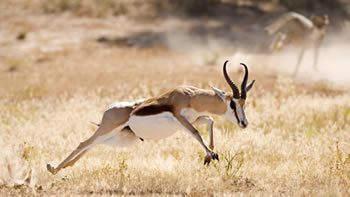
The Rocky Mountains are home to such jems as Montana's Glacier National Park, Canada's Banff, Wyoming's Yellowstone National Park and The Tetons just to name a few. Although many others would disagree there are many who agree with this statement. Numerous mountain ranges combine to produce some of the most incredible mountains in the world. North America's Continental Divide travels north to south through the Rocky Mountains. These pages are not about the mountains where these incredible animals call home. Much has been written about the uncomparable Rocky Mountains. The Rocky Mountains are home to the animals I am familiar with. Young mammals must be quick learners and rely upon instinct to live to an old enough age to pass on their genes and lessons learned to their offspring. Climate, terrain and other factors weigh heavily on each animal and they must learn to mitigate each factor in order to survive. No other place is as harsh as the mountain environment when considering the risks that each animal must take just to survive. A balance of both populations indicates a healthy ecosystem. Southern rochopper penguin ( Eudyptes chrysocome)įor more take a look at our Arctic animals list.In the cycle of life predators and prey play supporting roles to each other.King penguin ( Aptenodytes patagonicus).Emperor penguin ( Aptenodytes forsteri).

Red-faced spider monkey ( Ateles paniscus).Citrus swallowtail ( Papilio demodocus).Sumatran Elephant ( Elephas maximus sumatranus).Kissing gourami ( Helostoma temminckii).Goliath beetle ( Mecynorrhina ugandensis).Water chevrotain ( Hyemoschus aquaticus).Southern masked weaver ( Ploceus velatus).Gemsbok or South African oryx ( Oryx gazella).Thomson's gazelle ( Eudorcas thomsonii).North African ostrich ( Struthio camelus camelus)įor more, take a look at our complete list of desert animals.Some of the most important prey animals of the biome include: Desert prey animals or semi-arid zones: In addition, predator animals usually occupy the last links of the food chain.įor more, you may be interested in taking a look at our article where we discuss symbiosis definitions and examples.įor an ecosystem to remain stable, there must be a greater population of prey than predators. They may have claws, sharp teeth, strong jaws, venom or other features which allow them to capture their prey. On the other hand, when it comes to predator animal facts, these animals are often carnivorous or omnivorous animals. Toxic substances: some prey animals have glands that produce blinding, malodorous or toxic substances which they release to scare off predators.For example, a cow sleeps about 4 hours a day, whereas a cat can sleep up to 18 hours without problems. Sleep: many prey animals sleep very little.Camouflage: these animals have strategies to escape predation, such as camouflage, specific escape strategies, living in social groups and shelters.For example, pigeons have two foveas that allow them to see front and back at the same time. In addition, each eye usually has more than one fovea, which is the point inside the eye where all the light rays converge, whereby an image analyzed by the brain is formed. Eyes: prey animal eyes are usually placed on the sides of their face so that they have a wider vision-span.

Next, we detail the characteristics of the animals that are prey:
Predator vs prey animals series#
Prey animals do have a series of characteristics which define them. However, it’s important to know that secondary consumers, despite being carnivorous or omnivorous animals, can also be preyed upon by superpredators. These prey animals are often herbivorous. Within the food chain, prey animals are linked between the primary producers (autotroph organisms) and the secondary or tertiary consumers.


 0 kommentar(er)
0 kommentar(er)
